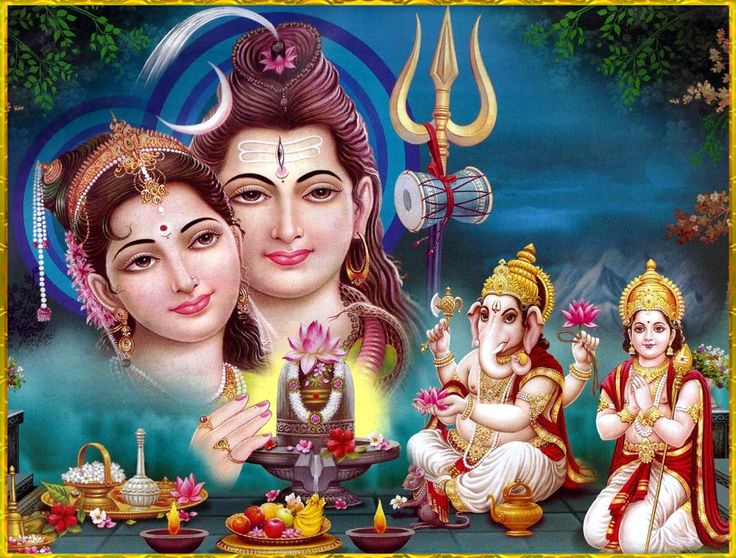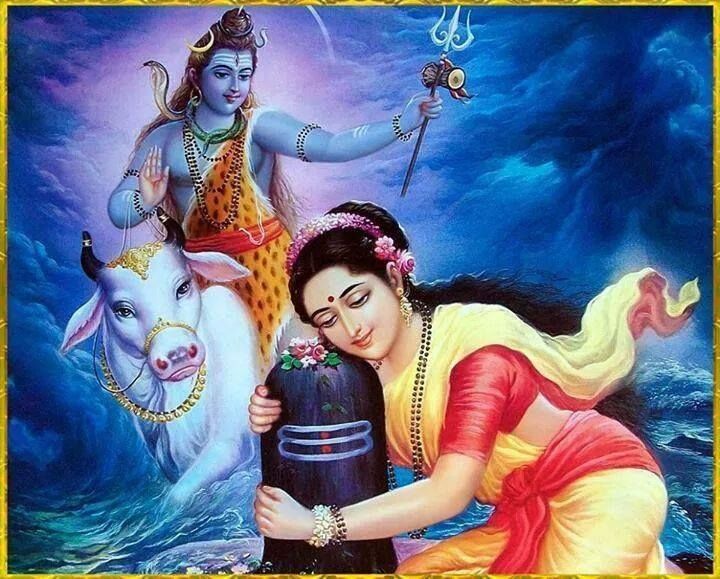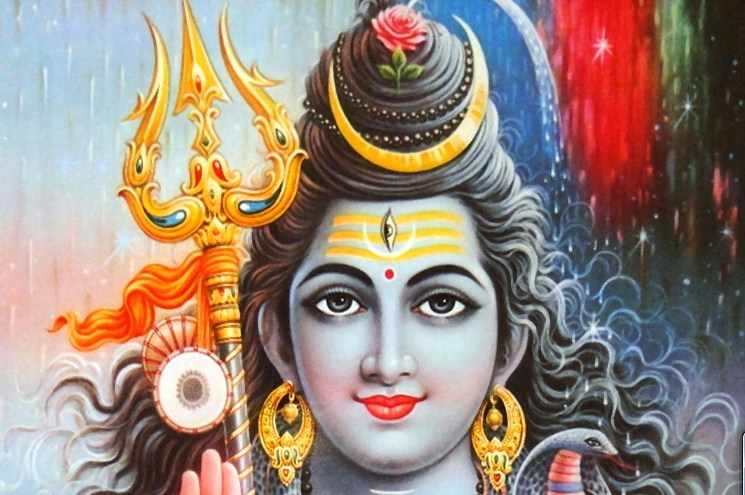No products in the cart.
Maha Shivratri is a climax of Magha Masa popular for Magha Snaanas as also Vasanta Panchami, Ratha Saptami, ; this is the climax of the Shukla Paksha on conclusion of these snanaas during which the Shivratri has to extend into the Nisheeha or mid- night, that is two ghadiyaas past the fourteen ghadiyas there before; of such time extension occurs then Maha Shivaratri is reckoned as on the following day or therewise on the preceding day. This significant day coinciding with Sun Day or Tuesday attains added Shiva Yoga. A person intending to implement the Shivratri Vrata needs to observe ‘Ekabhukta’or single meal on the Trayodashi and having done the Nitya karmaas in the morning of Chaturdashi and recite a Mantra Purvaka Sankalpa:
Shiva Raatri Vratam hyetat karishyehum Mahaa Phalam, Nirvighnam kuru Devaatratwat prasaadaa Jagatpatey/ Chaturda-shyaam niraahaaro bhutwaa Shambho parehani, Bhaksheyham Bhuki Muktyartham Sharanam my Bhaveshwara!
Jagadeshwara! This is my resolve to perform the most propitious Shiva Ratri Vrata and pray that with your grace the Vrata be completed without any kind of obstacles! I further resolve that on shall keep up fast on Chaturdashi and conclude it next forenoon only after the completion of of the formalities. Do bless me to achieve fulfillment!
Then the Vrata Karta should take Tila Snaana again, keep ‘Tripundra Bhasma’ on the forehead and Rudraksha Maalaas, enter Shivaalaya /Pujaa Griha at the Pradosha Time, be seated as ‘Uttaraabhimukha’, after ‘Aachamana’ and Sankalpa with Shiva preetyartham Shiva Raatrou Shiva Pujaam karishye and initiate the Puja:
Yaama Pujas
The Text of the Puja is:
Asya Shri Shiva Panchaakshari Maha Mantrasya, Vaama Deva Rishih, Anushthup chhandaha Shri Sadaa Shivo Devataa, Nyaasey Pujaney Japey viniyogah, Vaama Devaaya Rishiye namah, Shirasi Anushthupcchandasey namah; Mukhey Shreem Sadaa Shiva Devataayai namah, Hridi Om Nam Tatpurushaaya namah, Hridaye Om Nam Aghoraaya,Paadayoh Om shim Sadyojaataaya namah, Guhye Om Vaam Vaama Devaaya namah, Murdhini Om yam Ishaayaaya namah, Mukhey Om Om Hridayaaya namah, Om Nam Shirase swaaha, Om mam Shikhaayai vashat, Om shim Kavachaaya hum, OmVaam Netratrayaaya voushat, Om Astraaya phat/
This was how ‘Nyaasa’ was done, then perform Kalasha Puja and take to Dhyaana:
Dhyaaye nityam Mahesham Rajata giri nibham chaaru Chandraavatamsam, Ratnaakalpojjvalaangam Oparashu Mrigahraabheeti hastam prasannam/ Padmaaseenam Samantaatsutamamara Ganair vyaaghrakruttim vasaanam,Vishvaadyam Vishwa vandyam nikhila bhaya haram Pancha Vaktram Trinetram/
After Dhyaana, Shiva Linga Prana Pratishtha be done while touching the Linga and performing Aavahana:
Om Bhuh Purusham Saamba Sadaa Shiva maavaahayaami,Om Bhuvah Saamba Sadaa Sadaa Shiva maavaahayaami, Om Swaaha Saamba Sadaa maavaahayaami, Om Bhur-bhuvahswaha Saamba Sadaa Shiva maavaahayaami/
Pushpaanjali:
Swaamin Sarva Jagannaatha Yaavat Pujaavasaanakam,Taawatwam preetibhaavena Lingesminsannithim kuru/
Upachaaraas (Services):
Om Sadyojaatam prapadyaami Sadyojaataayavai namonamah-Aasanam samarpayaami Om namasshivaaya; Om bhavey bhavey naati bhavey bhavaswaam Om Namasshivaaya Paadyam samarpayaami; Om Bhavodbhavaaya Om Namasshivaaya Arghyam samarpayaami; Om Vaama Devaaya namah Om Namasshivaaya Aachamaneeyam samarpayaami;Om Jyeshthaaya namah Om Namasshivaaya Snaanam samarpayaami .
These Upachaaraas would be followed by the Mula Mantraas as also Panchaamrita Snaanaas with Aapyaayasva Mantraas and Shuddhodaka Snaanaas with Aapohishthaa Mantraas. Brahmanaas would then render group recitals of Ekaadashi (or atleast one) Rudraas and Purusha Sukta while performing Abhishekaas mixed with Chandana-Kumkuma-Karpura waters. The Abhishekaas shall follow Tarpanaas as follows:
Om Bhavam Devam Tarpayaami, Om Sharvam Devam Tarpayaami, Om Ishaanam Devam Tarpayaami, Om Pashupatim Devam Tarpayaami,Om Ugram Devam Tarpayaami, Om Rudram Devam Tarpayaami, Om Bhimam Devam Tarpayaami, OmMahaantam Devam Tarpayaami,Om Bhavasya Devasya Patneem Tarpayaami, Om Sharvasya Devasya Patneem Tarpayaami, Om Ishanasya Devasya Patneem Tarpayaami, Om Pashupater -devasya Patneem Tarpayaami, Om Ugrasya Devasya Patneem Tarpayaami, Rudrasya Devasya Patneem Tarpayaami,Om Bhimasya Devasya Patneem Tarpayaami,Om Mahato Devasya atneem Tarpayaami/
Tarpanaanta Puja is executed then:
Om Shreshthaa namah, Om Namasshivaaya, Shri Saamba Shivaaa namah Vastram samarpaaami/ Om Namasshivaaya Aachamaneeyam, Om Rudraaya Om Namasshivaaya Yagnopaveetam, Om Kaalaaya Namah Om Namasshivaaya Shri Chandanam, Om Balavikaranaaya Om Namasshivaaya Akshataan Samarpayaami, Om Balavika -ranaaya Namah Om Namasshivaaya Pushpaani –Bilva dalaani Samarpayaami .
This Service with Pushpa-Bilwa-Akshataas should be offered while reciting Shivaashtottaraa- Sahasra Naamaavalis. There after other Services should follow:
Om Balaayanamah Dhupamaa ghrapayaami, Om Bala -pramathanaaya namah Deepam darshayaami, Om Sarva Bhuta damanaayanamah Naivedyam samarpayaami, Om Manonmanayaa namah Taambulam samarpa –yaami, Om namasshivaa Vedaahametam Saamraajya bhojjyam Shri Saambashivaayanamah Neeraajanam darshayaami,
and the Mantra Pushpam samarpayaami viz.
Om Ishaanassarva- Vidyaanaam Ishwarassarva Bhutaa -naam Brahmaadipatih Brahmanodhipatih Brahmaa Shivomey astu Sadaa Shivom
The Yaama Pujas would thus be concluded by reciting the Twelve significant Shiva Naamaas viz:
Shivaaya namah, Rudraaya namah, Pashuopataye namah, Neelakanthaaya namah, Maheshwa raaya namah, Hari keshaaya namah, Virupaakshaaya namah, Pinaakiney namah, Tripuraantakaaya namah,Shambhavey namah, Shuliney namah and Maha -Devaaya namah
Finally after Aparaadha Kshamaa- Pradakshina-Saashtaanga Namaskaaraas, the Karta would leave Akshataas and water on the ground stating: Anena Pujanena Shri Saamba Sadaa Shiva preeyataam. Three more Yaama Pujas should be accomplished on the same lines with Jaagaranas, Hara naama Stutis, Purana Vachana especially of Shiva,Linga, Skanda, Markandeya orientations, Bhajanaas and so on with full involvement. Next morning after Nitya Karmas and Punah Pujaas, Paarana- Brahmana Bhojana Daanaas are concluded and the Vrata samapti be fulfilled by dedicating it to Maha Deva:
Yanmaadyakrutam Punyam tadrudrasya Niveditam, Tatprasaadaan Maha DevaVratamadya samarpitam, Prasanno bhavamey Shriman sadgatih pratipaadyataam/ Twadaalokana maatrena Pavbitrosmi na samshayah ( What ever Sukruti is achieved by this Vrata is dedicated to you as I am purified by your grace without doubt; do kindly accept my offerings and bestow Sadgati to me.)
Samsaara klesha dagdhashya Vratenaanena Shankara, Praseeda Sumukho Naatha Jnaana drishti padobhava ( Shankara! Kindly be pleased with this Vrata executed by me as per my ability and devotion; Parameshwara! As I am in the deep distress of the Ocean of ‘Sansaara’, do kindly grant me ‘Jnaanaa Drishti’ and liberate me with your grace and benevolence!. Dharma Sindhu
Observance of Maha Shivratri and its significance
 Austerities by way of day/night fasts and dedicated devotion on Maha Shivaratri falling on Krishna Paksha or dark fortnight of Phalguna month every year are considered as the sure steps to ‘Iham and Param’ viz. Happiness in the current phase of Life and Attainment of Salvation threafter! In the early morning of Shivaratri day, a devotee should take a vow to observe day/night austerities. In the night or Sivarathri, there must be Archana, Abhisheka, Japa and full fledged worship either at a Temple or at home depending on convenience; actually the worship by way of continuous ‘Maha Nyasayutha Abhisheka’with Archana along with ‘Shodasopacharas’ or the sixteen types of Services and Arti, but for the sake of convenience, the Puja may be repeated every three hours during the night along with Laghu Nyasa Abhisheka, Archana, Arti etc. The night long austerity must be followed by ‘Punah Puja’ next morning and Bhojan (meals) along Brahmanas, who should also be satisfied with ‘Dakshinas’. After observing ‘Shivarathris’ for fourteen consecutive years, one could perform ‘Udyapan’ or successful completion of the Shivratri Vrata.
Austerities by way of day/night fasts and dedicated devotion on Maha Shivaratri falling on Krishna Paksha or dark fortnight of Phalguna month every year are considered as the sure steps to ‘Iham and Param’ viz. Happiness in the current phase of Life and Attainment of Salvation threafter! In the early morning of Shivaratri day, a devotee should take a vow to observe day/night austerities. In the night or Sivarathri, there must be Archana, Abhisheka, Japa and full fledged worship either at a Temple or at home depending on convenience; actually the worship by way of continuous ‘Maha Nyasayutha Abhisheka’with Archana along with ‘Shodasopacharas’ or the sixteen types of Services and Arti, but for the sake of convenience, the Puja may be repeated every three hours during the night along with Laghu Nyasa Abhisheka, Archana, Arti etc. The night long austerity must be followed by ‘Punah Puja’ next morning and Bhojan (meals) along Brahmanas, who should also be satisfied with ‘Dakshinas’. After observing ‘Shivarathris’ for fourteen consecutive years, one could perform ‘Udyapan’ or successful completion of the Shivratri Vrata.
‘Maha Shivarathri jaagarana’ even by mistake could yield fruits, let alone proper and systematic worship; this was illustrated by an incident said Sutha Muni at the congregation of Sages at Naimisaranya. There was a poor hunter named Gurudruha who became extremely hungry along with his family members on a whole day and that night happened to be a Shivratri. He entered a forest on the eve of Shivrahri and waited for any animal to kill and satisfy the hunger; he waited near a waterbody over a bel tree nearby under which there was a Shiva Linga as a coincidence. Having waited for the first ‘Prahara’ (three hours) of the night, he was lucky to have sighted a female deer along its kids approaching the water body to quench its thirst. He pulled out his bow and an arrow ready to aim at the mother deer and by a twist of fate the branch of the bel tree on which he sat moved, some bel leaves fell on the Shiva Linga and some water in a vessel carried by the hunter got spilt down on the Linga, thus performing the first Phahara puja.The deer which was very sensitive even to small sounds of leaves and water falling from the tree noticed that the hunter was ready to kill it. The animal made a sincere and convincing request to the hunter that if allowed it desired to leave the deer kids to their father and definitely return bach to be killed by him. Very reluctantly, the hunter agreed and let the animals leave. The second Prahara was closing but there was no trace of the mother deer. But the sister of the earlier deer approached the pond along her kids and the happenings of the earlier Prahara repeated viz.the hunter pulled out his bow and arrow, the bel tree leaves as also the water drops from the hunter’s vessel fell on the Shiva Linga, the sister deer made a similar request and the hunter let the animal leave as he did to the earlier one, thus accomplishing the worship of the third Prahara. As the third Prahara was closing, the husband of the original deer came in search of the female deer and the kids and the earlier happenings repeated once again and the earlier Prahara puja too was executed successfully. It was a great sight of all the deers of both the families approached during the final Prahara and the hunter was delighted that he could have a feast any time but the earlier happenings repeated and the fourth Prahara worship too was implemented. But, after the fourth worship, Gurudruha’s psychology was transformed; he repented for his evil thoughts and took a vow to eschew his erstwhile acts of violence. Bhagavan Shiva revealed Himself before Gurudruha as a transformed person and blessed him that in his next birth, he would be Nishad during Rama’s incarnation and the latter would give him the boon of attaining Vaikuntha. (Shiva Purana)






